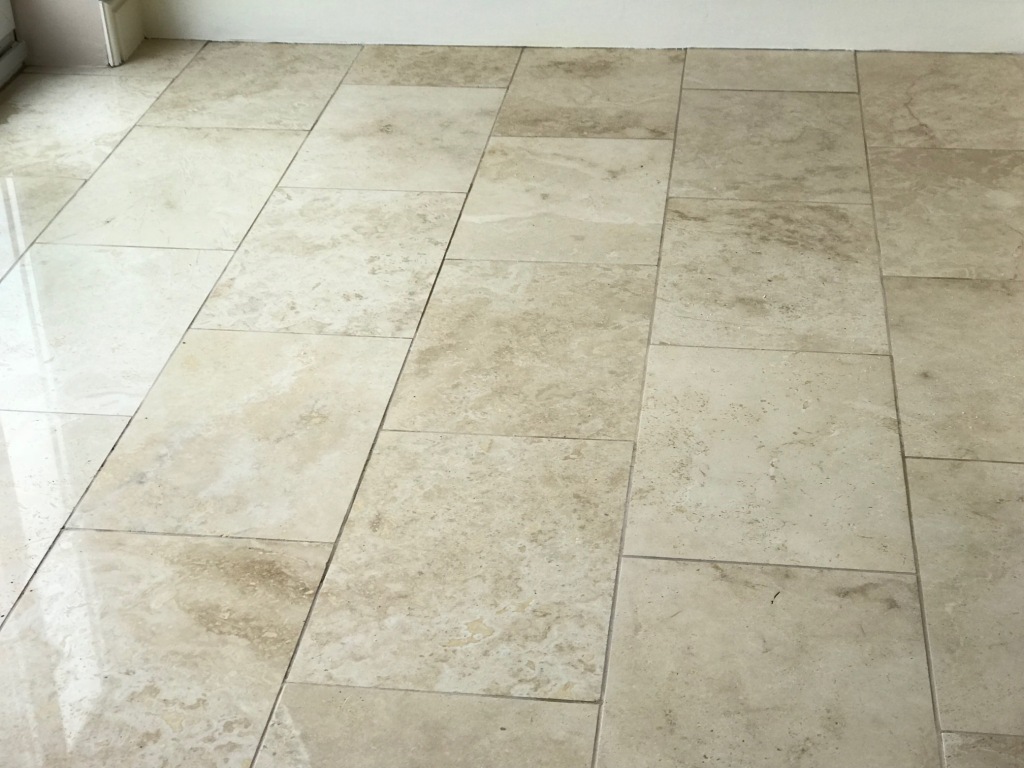What You'll Need:
When you are installing wood or laminate, there are several different types of transition pieces that you could potentially install. Before installing, you need to make sure that you choose the proper piece for the job. If you are going from wood or laminate to carpet, you need to use an end mold which is also sometimes referred to as a carpet reducer. If you are going to a vinyl floor, you will need a vinyl reducer. If you are going up to another hard surface floor, you should use a t-mold.
- Transition strips
- Saw
- Tape measure
- Pencil
- Liquid nails
- Caulk gun
- Drill
- Heavy objects
When you are installing wood or laminate, there are several different types of transition pieces that you could potentially install. Before installing, you need to make sure that you choose the proper piece for the job. If you are going from wood or laminate to carpet, you need to use an end mold which is also sometimes referred to as a carpet reducer. If you are going to a vinyl floor, you will need a vinyl reducer. If you are going up to another hard surface floor, you should use a t-mold.
Step 2 - Measure
Measuring is perhaps the most important step of this process. Transition pieces are generally very expensive and if you cut the transition short, you will either have to live with a gap or purchase another piece. Because of this, you need to take great care when you are measuring and try to be as detailed as possible. Measure down to the smallest increment that you can find. Take your tape measure and stretch it across the opening on the floor.
Measuring is perhaps the most important step of this process. Transition pieces are generally very expensive and if you cut the transition short, you will either have to live with a gap or purchase another piece. Because of this, you need to take great care when you are measuring and try to be as detailed as possible. Measure down to the smallest increment that you can find. Take your tape measure and stretch it across the opening on the floor.
Step 3 - Mark the Transition
Once you have the dimension that you need, mark the transition piece that you are about to cut. Stretch out your tape measure on the transition piece and then use your pencil to mark the appropriate dimension.
Once you have the dimension that you need, mark the transition piece that you are about to cut. Stretch out your tape measure on the transition piece and then use your pencil to mark the appropriate dimension.
Step 4 - Make the Cut
After marking the transition piece, you need to cut it so that it will fit in the opening on the floor. If you have a table saw, this would be the easiest way to cut the transition piece. Place the transition under the saw blade and hold it steady. If you can put the transition piece in a vice, this would be ideal. If you are cutting a laminate transition, you need to be extremely careful. The top layer of a laminate transition piece is a type of construction paper. If you do not make a clean cut, you will tear the edge of the paper.
After marking the transition piece, you need to cut it so that it will fit in the opening on the floor. If you have a table saw, this would be the easiest way to cut the transition piece. Place the transition under the saw blade and hold it steady. If you can put the transition piece in a vice, this would be ideal. If you are cutting a laminate transition, you need to be extremely careful. The top layer of a laminate transition piece is a type of construction paper. If you do not make a clean cut, you will tear the edge of the paper.
Step 5 - Attach the Transition
You can attach the transition in one of two ways. You can glue it to the floor with liquid nails or you could use the track that comes with it to attach it. If you are using liquid nails, apply a bead of the liquid nails to the underside of the transition. Then press it onto the floor. When using the track, you will screw the track down to the ground and then snap the transition into place. If you glue down the transition piece, you need to put something heavy on top of it while it dries.
You can attach the transition in one of two ways. You can glue it to the floor with liquid nails or you could use the track that comes with it to attach it. If you are using liquid nails, apply a bead of the liquid nails to the underside of the transition. Then press it onto the floor. When using the track, you will screw the track down to the ground and then snap the transition into place. If you glue down the transition piece, you need to put something heavy on top of it while it dries.
Source: www.DoItYourself.com






























